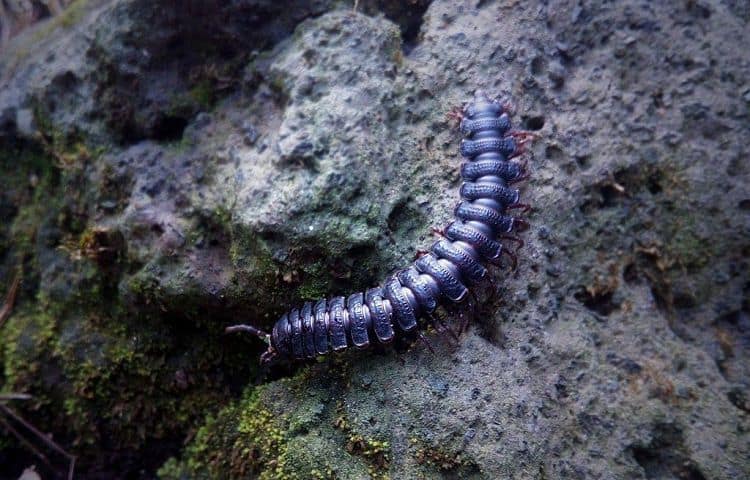Table of Contents
As burrowing creatures, millipedes in captivity will require conditions that are similar to their natural habitats. This includes a suitable substrate. In fact, not only do millipedes love to burrow in substrate, but they also actually eat this material too. What this means for the health and wellbeing of your millipede is that substrate is one of the most important considerations when choosing your setup.
What is the Best Substrate for Millipedes?
For millipedes to thrive, substrate should be moist and airy. If it is too dry then your millipede could become dehydrated, but if it is too wet then it could become susceptible to fungi and bacteria. Despite what many millipede owners believe, nutrient-rich substrate is not the best choice for millipedes, particularly those species that may be more sensitive such as Trigoniulus macropygus or Chicobolus spinigerus. For these particular types of millipedes, the choice of substrate is critical to their survival.
to thrive, substrate should be moist and airy. If it is too dry then your millipede could become dehydrated, but if it is too wet then it could become susceptible to fungi and bacteria. Despite what many millipede owners believe, nutrient-rich substrate is not the best choice for millipedes, particularly those species that may be more sensitive such as Trigoniulus macropygus or Chicobolus spinigerus. For these particular types of millipedes, the choice of substrate is critical to their survival.

American Giant Millipede 
Sagmatostreptus strongylopygus 
Spotted Snake Millipede
What Type of Substrate Should You Use?
The best type of substrate is one that consists of a mix of leaves, wood, and soil. It is important to ensure that whatever mix you do end up choosing is free from pests. There are those that like to mix coconut fiber or coir with hardwood leaves and crumbly hardwood; others prefer to use a mix of soil or compost with dry leaf litter, sand, and deadwood. Sand is added to prevent the substrate from compacting too much.
Be aware that not all leaves and wood are suitable for millipede substrates. The best choice by far is oak in terms of leaves and wood. However, when you do use leaves, you must make sure that they are dry and never freshly picked or fallen. Softwoods such as pine should be avoided as these contain resins that could be harmful for your millipede.

Yellow Banded Millipede 
Octoglena bivirgata 
Millipede 
Giant Fire Millipede 
Apheloria virginiensis 
Yellow-Spotted Millipede
How Much Substrate Do You Need?
There are those that insist that as a rule of thumb your substrate should be as deep as your longest millipede, but four to six inches really should be sufficient. A bigger concern is ensuring that the substrate is kept moist – but not too moist. Keeping it moist at the bottom but drier towards the top will make for the ideal substrate.
Nutrition and Hydration
While millipedes get their food and water from substrate, you should also provide fresh food such as fruit and vegetables as well as protein occasionally (dried cat food is a good option). Food should be placed on top of the substrate and anything that has not been eaten should be removed before it begins to mold. This will ensure that your millipede gets the right amount of nutrients and hydration.
Photo Credits:
- Featured Image (Flat Millipede): Danny Khorskhi – This file is licensed under the Creative Commons
 Attribution-Share Alike 4.0 International
Attribution-Share Alike 4.0 International license.
license. - Yellow-Banded Millipede: Totodu74
 – This file is licensed under the Creative Commons
– This file is licensed under the Creative Commons Attribution-Share Alike 3.0 Unported
Attribution-Share Alike 3.0 Unported license.
license. - Giant Fire Millipede: Charles J Sharp – Sharp Photography
 – This file is licensed under the Creative Commons
– This file is licensed under the Creative Commons Attribution-Share Alike 4.0 International
Attribution-Share Alike 4.0 International license.
license. - Octoglena bivirgata: Sam McNally – https://www.inaturalist.org/photos/275405
 – This file is licensed under the Creative Commons
– This file is licensed under the Creative Commons Attribution-Share Alike 4.0 International
Attribution-Share Alike 4.0 International license.
license. - Sagmatostreptus strongylopygus: Henrik Enghoff. 2011. Trans-segmental serial colour patterns in millipedes and their developmental interpretation (Diplopoda). International Journal of Myriapodology 6: 1–27, doi:10.3897/ijm.6.1949
 – This file is licensed under the Creative Commons
– This file is licensed under the Creative Commons Attribution 4.0 International
Attribution 4.0 International license.
license. - American Giant Millipede: Randal J. (RJFerret) – This file is licensed under the Creative Commons Attribution-Share Alike 2.5 Generic license.

- Yellow-Spotted Millipede: Franco Folini
 – This file is licensed under the Creative Commons
– This file is licensed under the Creative Commons Attribution-Share Alike 3.0 Unported
Attribution-Share Alike 3.0 Unported license.
license. - Apheloria virginiensis: Bob Walker – This file is licensed under the Creative Commons
 Attribution-Share Alike 4.0 International
Attribution-Share Alike 4.0 International , 3.0 Unported
, 3.0 Unported , 2.5 Generic
, 2.5 Generic , 2.0 Generic
, 2.0 Generic and 1.0 Generic
and 1.0 Generic license.
license. - Spotted Snake Millipede: Whitney Cranshaw – http://www.insectimages.org/browse/detail.cfm?imgnum=5393517
 – This file is licensed under the Creative Commons
– This file is licensed under the Creative Commons Attribution 3.0 Unported
Attribution 3.0 Unported license.
license. - Millipede: Marshal Hedin
 – This file is licensed under the Creative Commons
– This file is licensed under the Creative Commons Attribution 2.0 Generic
Attribution 2.0 Generic license.
license.

